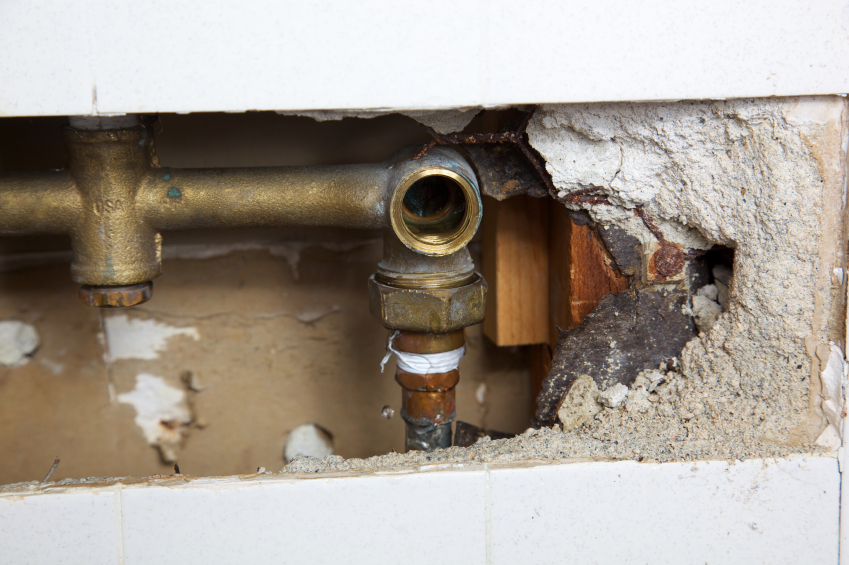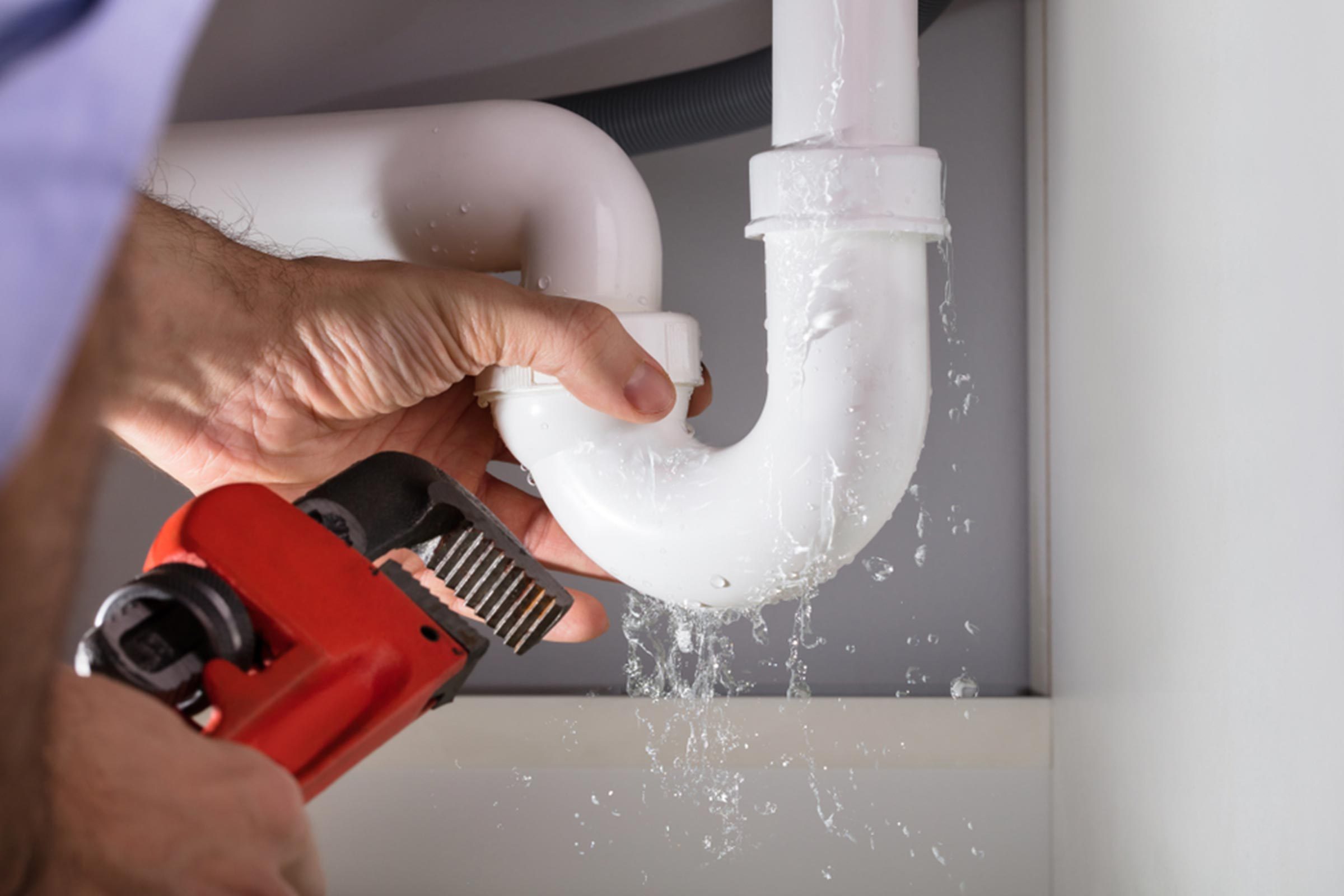Home Appliance Issues: When To Seek a Plumbing Professional's Help for Common Issues
Home Appliance Issues: When To Seek a Plumbing Professional's Help for Common Issues
Blog Article
This post listed below about Why Do My Pipes Make Noises is really fascinating. Read on and draw your own personal results.

To diagnose noisy plumbing, it is essential to determine first whether the unwanted sounds occur on the system's inlet side-in various other words, when water is transformed on-or on the drain side. Noises on the inlet side have differed reasons: excessive water pressure, worn valve and faucet parts, improperly connected pumps or other appliances, incorrectly placed pipe bolts, and plumbing runs containing too many tight bends or various other constraints. Sounds on the drainpipe side normally come from bad place or, just like some inlet side noise, a layout containing limited bends.
Hissing
Hissing sound that takes place when a tap is opened somewhat typically signals extreme water pressure. Consult your local public utility if you believe this trouble; it will certainly be able to tell you the water stress in your location as well as can set up a pressurereducing valve on the inbound water system pipeline if required.
Thudding
Thudding noise, often accompanied by shuddering pipelines, when a faucet or appliance shutoff is shut off is a condition called water hammer. The noise and also resonance are triggered by the reverberating wave of pressure in the water, which instantly has no area to go. In some cases opening a shutoff that discharges water quickly right into an area of piping including a restriction, elbow, or tee installation can create the same problem.
Water hammer can typically be healed by setting up fittings called air chambers or shock absorbers in the plumbing to which the trouble valves or taps are linked. These devices permit the shock wave produced by the halted flow of water to dissipate airborne they include, which (unlike water) is compressible.
Older plumbing systems may have brief vertical areas of capped pipe behind walls on tap runs for the exact same purpose; these can at some point full of water, reducing or damaging their efficiency. The treatment is to drain pipes the water system entirely by shutting off the primary supply of water shutoff as well as opening up all faucets. After that open the major supply valve and shut the faucets one by one, starting with the tap nearest the valve as well as ending with the one farthest away.
Babbling or Screeching
Extreme chattering or screeching that happens when a shutoff or faucet is activated, and that generally vanishes when the installation is opened fully, signals loosened or defective inner parts. The option is to change the valve or tap with a new one.
Pumps as well as appliances such as washing equipments and dishwashing machines can move motor sound to pipes if they are incorrectly attached. Link such products to plumbing with plastic or rubber hoses-never inflexible pipe-to isolate them.
Other Inlet Side Noises
Squeaking, squealing, scratching, breaking, and tapping normally are brought on by the expansion or tightening of pipelines, generally copper ones supplying warm water. The sounds happen as the pipelines slide versus loose fasteners or strike neighboring house framing. You can commonly determine the location of the issue if the pipelines are exposed; just comply with the audio when the pipes are making noise. Probably you will certainly uncover a loose pipe wall mount or a location where pipelines lie so close to flooring joists or various other mounting pieces that they clatter against them. Connecting foam pipeline insulation around the pipelines at the point of call should fix the issue. Make certain bands and hangers are protected as well as give ample support. Where possible, pipe fasteners must be affixed to substantial structural elements such as foundation walls rather than to framing; doing so minimizes the transmission of resonances from plumbing to surface areas that can intensify and also move them. If affixing fasteners to framing is unavoidable, wrap pipes with insulation or other resilient material where they get in touch with fasteners, as well as sandwich the ends of new fasteners in between rubber washers when installing them.
Fixing plumbing runs that experience flow-restricting limited or countless bends is a last resort that needs to be undertaken only after speaking with an experienced plumbing specialist. Regrettably, this scenario is rather usual in older residences that might not have actually been constructed with interior plumbing or that have actually seen numerous remodels, specifically by beginners.
Drain Sound
On the drainpipe side of plumbing, the principal objectives are to remove surface areas that can be struck by dropping or hurrying water and also to shield pipelines to consist of inevitable noises.
In new construction, bath tubs, shower stalls, toilets, and wallmounted sinks and containers must be set on or against resilient underlayments to reduce the transmission of audio with them. Water-saving toilets and also taps are much less loud than conventional models; mount them rather than older types even if codes in your location still allow utilizing older fixtures.
Drains that do not run up and down to the basement or that branch right into straight pipe runs sustained at flooring joists or other framing existing especially troublesome sound issues. Such pipes are huge enough to radiate substantial vibration; they also lug considerable amounts of water, that makes the situation even worse. In new construction, define cast-iron soil pipelines (the big pipes that drain pipes toilets) if you can manage them. Their massiveness contains a lot of the noise made by water travelling through them. Likewise, avoid directing drainpipes in wall surfaces shared with rooms as well as areas where people collect. Walls containing drainpipes should be soundproofed as was explained earlier, utilizing double panels of sound-insulating fiber board and wallboard. Pipelines themselves can be wrapped with unique fiberglass insulation made for the function; such pipelines have an invulnerable plastic skin (in some cases containing lead). Results are not constantly satisfying.
3 Most Common Reasons for Noisy Water Pipes
Water hammer
When water is running and is then suddenly turned off, the rushing liquid has no place to go and slams against the shut-off valve. The loud, thudding sound that follows is known as a water hammer. Besides being alarming, water hammer can potentially damage joints and connections in the water pipe itself. There are two primary methods of addressing this issue.
Check your air chamber. An air chamber is essentially a vertical pipe located near your faucet, often in the wall cavity that holds the plumbing connected to your sink or tub. The chamber is filled with air that compresses and absorbs the shock of the fast moving water when it suddenly stops. Unfortunately, over time air chambers tend to fill with water and lose their effectiveness. To replenish the air chambers in your house you can do the following. Turn off the water supply to your house at the main supply (or street level). Open your faucets to drain all of the water from your plumbing system. Turn the water back on. The incoming water will flush the air out of the pipes but not out of the vertical air chamber, where the air supply has been restored. Copper pipes
Copper pipes tend to expand as hot water passes through and transfers some of its heat to them. (Copper is both malleable and ductile.) In tight quarters, copper hot-water lines can expand and then noisily rub against your home's hidden structural features — studs, joists, support brackets, etc. — as it contracts.
One possible solution to this problem is to slightly lower the temperature setting on your hot water heater. In all but the most extreme cases, expanding and contracting copper pipes will not spring a leak. Unless you’re remodeling, there's no reason to remove sheetrock and insert foam padding around your copper pipes.
Water pressure that’s too high
If your water pressure is too high, it can also cause noisy water pipes. Worse, high water pressure can damage water-supplied appliances, such as your washing machine and dishwasher.
Most modern homes are equipped with a pressure regulator that's mounted where the water supply enters the house. If your home lacks a regulator, consider having one professionally installed. Finally, remember that most plumbers recommend that water is delivered throughout your home at no lower than 40 and no greater than 80 psi (pounds per square inch).
Whatever the state of your plumbing, one thing is certain — you’re eventually going to encounter repair and replacement issues around your home that require professional help. That’s where American Home Shield can come to your aid.
https://www.ahs.com/home-matters/repair-maintenance/causes-of-noisy-water-pipes/

Do you enjoy reading up on Why is My Home Making Strange Plumbing Noises? Place a remark down the page. We will be delighted to see your opinions about this post. We hope that you come back again in the near future. Liked our write-up? Please share it. Help someone else find it. I thank you for reading our article about Why Do My Plumbing Pipes Make A Knocking Noise.
Rates Report this page